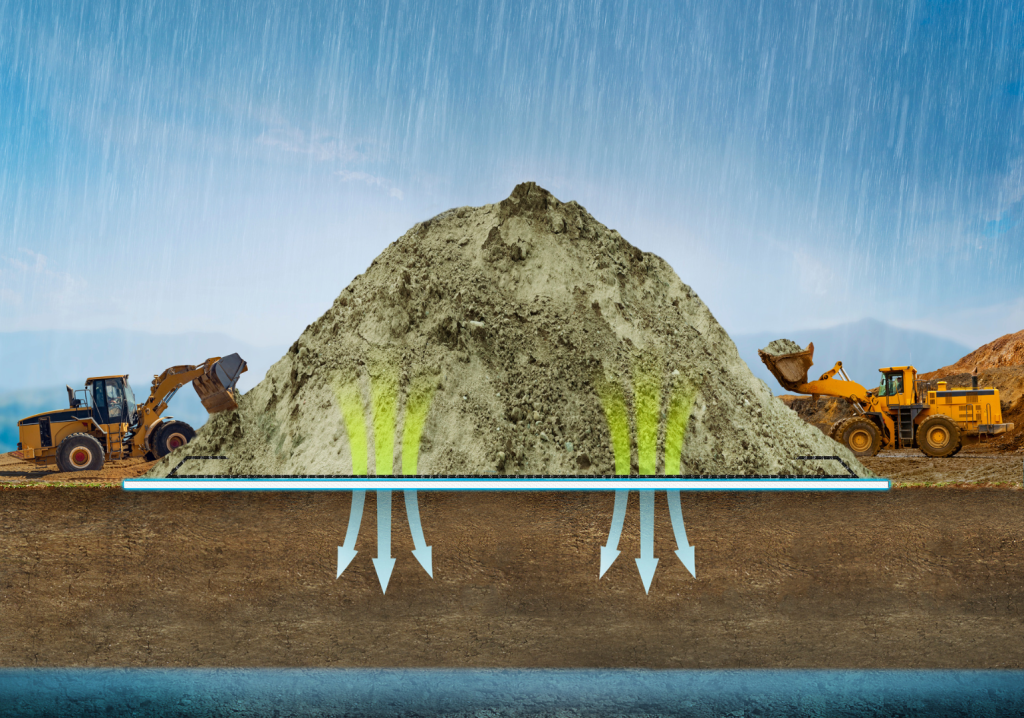In the late 1940s, a new set of chemicals was developed that revolutionised the manufacture of everything from cookware, clothing and food packaging to firefighting foam, cosmetics and medical devices.
Per- and polyfluorinated alkyl substances (PFAS) could repel water, oil and stains so quickly became widely used on thousands of products, including Teflon, impermeable clothing and footwear, dental floss, cosmetics and artificial turf. They are also the reason why the grease in pizzas doesn’t seep through the cardboard boxes.
However, in the 1990s, scientists realised that PFAS, also known as “forever chemicals” due to their resistance to degradation, had found their way into waterways, soil, fish and other animals. Tests revealed that they were also commonly present in human blood, and could be harmful to health.
“They break down extremely slowly, so they accumulate over time,” Malek Bouazza, Professor of Geotechnical Engineering at Monash University and a world-renowned authority on geosynthetics and environmental geotechnics told create.
“As they are so common, over time they cause significant and damaging pollution in heavily industrial areas. Minimising their migration into ecosystems has become extremely important in making our environment safer.”
Contamination dangers
Studies have shown that most Australians have detectable amounts of PFAS in their bloodstream as a result of daily exposure to food packaging, stain protection products, and contaminated drinking water.
Awareness of the dangers was boosted by the 2019 film Dark Waters, which chronicled a devastating contamination in the US town of Parkersburg, West Virginia.
In Australia in 2023, 30,000 farmers and other landowners were awarded $132 million in compensation for the pollution caused by PFAS contained in firefighting foam. In the areas surrounding hundreds of facilities used to train crews, repeated use of the foam had led to extremely high levels of the chemicals.
The Australian government subsequently announced it was banning three of the most dangerous PFAS on the market.
“The foam was used for over three decades in this country before it started to be phased out,” Mouazza said. “At the fire brigade bases, it would have been deployed thousands of times causing significant damage to the environment.”
The serious consequences of that damage have led to many containment and decontamination strategies to protect agriculture, wildlife and nearby residents.
Absorbent barrier
HUESKER developed Tektoseal Active PFAS, a highly effective pollutant barrier, in response to the problem. It combines the practicality of geotextiles with PFAS sorbents to isolate and remediate contaminated soils. Its unique composition contains woven and nonwoven geotextiles and a blend of highly engineered sorbents.
The two layers of fabric sandwich the sorbent resin, allowing water to pass through while binding the harmful chemicals within its core.
“Our permeable contaminant barriers are installed in soil and underwater,” said Gus Martins, Director of Operations and Engineering at HUESKER. “Fast kinetics and the high binding capacity adsorbents mean it can be applied to a wide range of PFAS at various concentrations. It also makes projects more sustainable as the pollutant filter is very thin with high absorbency.”
Tektoseal Active PFAS is used to line landfills in combination with traditional sealing methods. It’s also effective at construction sites and in areas where soil that’s already contaminated needs to be contained. Its groundbreaking selective ion exchange resin has a much higher pollutant absorption capacity than mineral adsorbers or alternative solutions.
It has several other advantages:
- A fast sorption capacity of fewer than three minutes means it can be used at high eluate permeation.
- Its high-binding strength ensures less than 0.1 per cent of bounded PFAS is desorbed.
- Tests show that 99.9 per cent of PFAS congeners are removed irrespective of concentration (ranges 1 – 4000 µg/L).
- The active geocomposite’s wide range capacity makes it ideal for applications where multiple contaminants may be present in different concentrations.
- Unlike other treatments, its active resin can deal with a wide range of contaminants, so if a new threat evolves, no further action must be taken or redone.
Tektoseal Active PFAS is manufactured in roll form and delivered to sites for easy installation. Crucially, it eliminates the need for trucks to transport the affected soil or material to disposal, making it a lower-energy consumption solution with a minimal environmental footprint.

